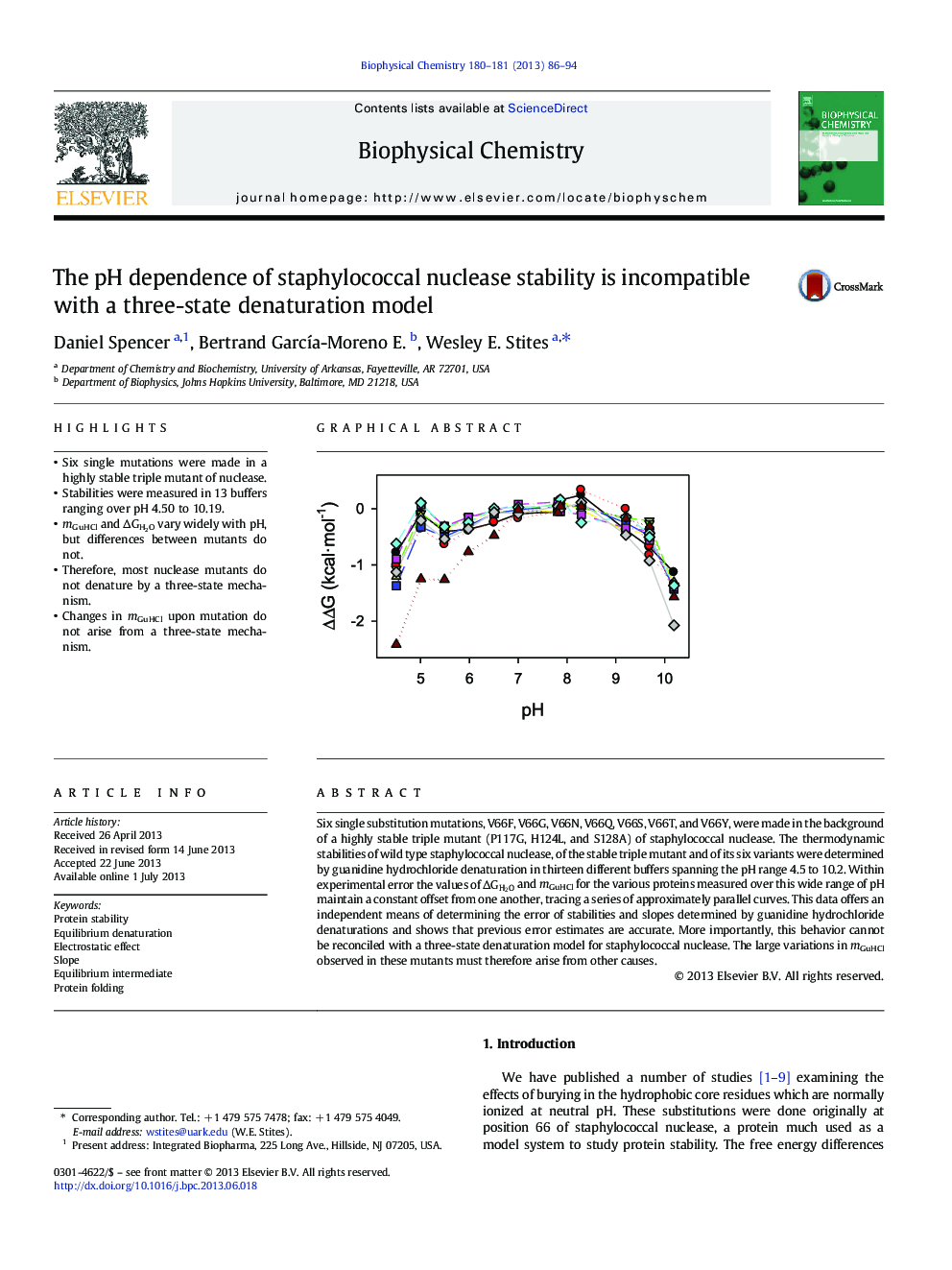| کد مقاله | کد نشریه | سال انتشار | مقاله انگلیسی | نسخه تمام متن |
|---|---|---|---|---|
| 5371090 | 1503933 | 2013 | 9 صفحه PDF | دانلود رایگان |

- Six single mutations were made in a highly stable triple mutant of nuclease.
- Stabilities were measured in 13 buffers ranging over pHÂ 4.50 to 10.19.
- mGuHCl and ÎGH2O vary widely with pH, but differences between mutants do not.
- Therefore, most nuclease mutants do not denature by a three-state mechanism.
- Changes in mGuHCl upon mutation do not arise from a three-state mechanism.
Six single substitution mutations, V66F, V66G, V66N, V66Q, V66S, V66T, and V66Y, were made in the background of a highly stable triple mutant (P117G, H124L, and S128A) of staphylococcal nuclease. The thermodynamic stabilities of wild type staphylococcal nuclease, of the stable triple mutant and of its six variants were determined by guanidine hydrochloride denaturation in thirteen different buffers spanning the pH range 4.5 to 10.2. Within experimental error the values of ÎGH2O and mGuHCl for the various proteins measured over this wide range of pH maintain a constant offset from one another, tracing a series of approximately parallel curves. This data offers an independent means of determining the error of stabilities and slopes determined by guanidine hydrochloride denaturations and shows that previous error estimates are accurate. More importantly, this behavior cannot be reconciled with a three-state denaturation model for staphylococcal nuclease. The large variations in mGuHCl observed in these mutants must therefore arise from other causes.
Journal: Biophysical Chemistry - Volumes 180â181, OctoberâNovember 2013, Pages 86-94